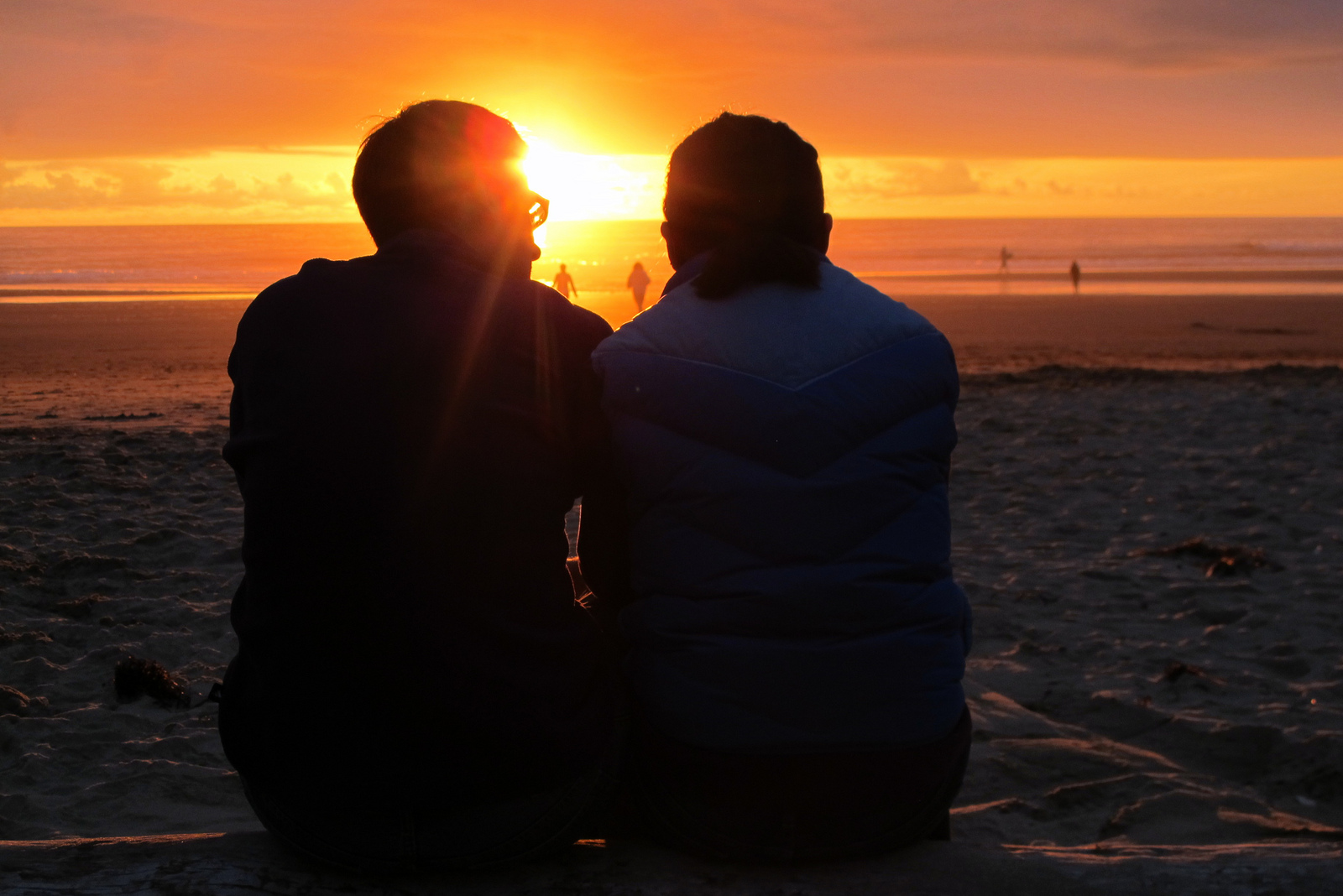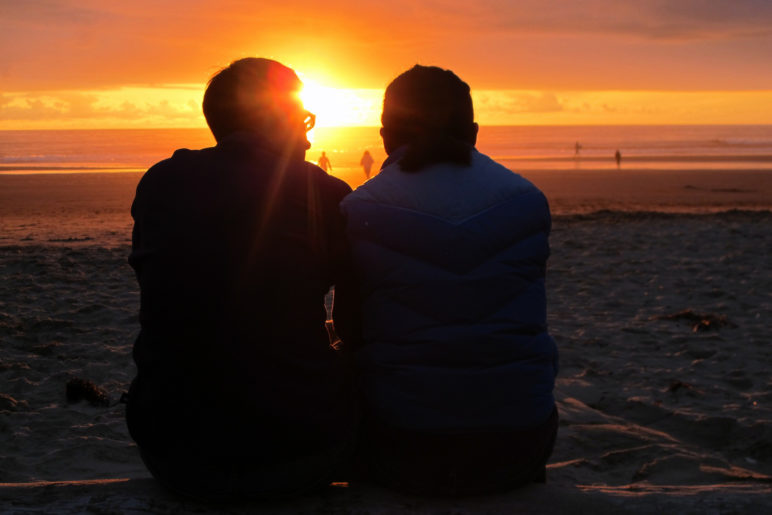Editor’s note February 2017: For all the Northwest lovers out there this Valentine’s Day—as in, people who love the Northwest, of course!—a throwback to this article from five years ago, in which Eric de Place took readers on a tour of Cascadia’s love-themed locales. How many of the following have you visited? Any we’re missing? Add ’em in the comments.
Ah, Valentine’s Day, the most risible of holidays. Because I loathe it so much, my valentine to readers this year is a batch of Northwest geography trivia that you can use to a) woo your one-and-only (provided that he, she, or they is a geek), b) stave off loneliness by inducing sleep, or c) annoy your partner. Depending on your situation, perhaps all three.
Where did the Northwest’s early explorers spend their Valentine’s Days?
If place names are indication, it appears that “up a creek” was a popular choice. Witness places like Valentine Creek southwest of Salem; the Valentine Creek that is a tributary of the Twisp River in eastern Washington; and British Columbia’s two Valentine Creeks, one near Kamloops and one north of Cranbrook.
Other choice locales include Valentine Ridge above the Snake River in eastern Washington, as well as BC’s Valentine Hill (above Powell River), Valentine Lake (near 100 Mile House), and Valentine Mountain (southwest Vancouver Island). Cupid’s Knoll in Monmouth, Oregon, also rates a mention.
The Northwest is for lovers… and honeymooners
The star-crossed may have been uniquely drawn to northwest Washington. Lummi Island is home to Lover’s Bluff, Orcas Island is home to Lover’s Cove, Whidbey Island is home to Lover’s Grove, and Clallam County is home to Lover’s Lane.
Yet tying the knot may have been more popular elsewhere. Oregon is home to no fewer than four Honeymoon Creeks, one each in Grant, Klamath, Wallowa, and Wheeler Counties, not to mention a Honeymoon Lake in Harney County.
British Columbia did even better with newlyweds, claiming three of its own Honeymoon Creeks. Two are relatively nearby one another, in the remote country north of Prince George, and the other is on Bowen Island, which is also home to a Honeymoon Lake. BC also has a Honeymoon Bay on Lake Cowichan, and Stuart Lake near Fort Saint James apparently contains a tiny Honeymoon Island. Idaho has a Honeymoon Creek and Lake in the mountains southwest of McCall. Washington’s sole such designation, Honeymoon Meadows, a backcountry campite on the Dosewallips River, does not even rate as an official place name.
I suppose we can’t overlook Oregon’s Bridal Veil Falls, as well as the “town” of Bridal Veil that exists basically to postmark wedding invitations. It’s easily the best known Northwest location with that name. Yet there is another Bridal Veil Falls in Idaho (as well as a Bridal Wreath Springs elsewhere in the state), plus two more in Washington, and another two in BC.
We left our hearts in…
I’ll spare you the full litany of “Heart” and “Love”-named places, but suffice it to say that BC has both a Love Creek and a Love Lake in central Vancouver Island. Washington has a Love Creek in Clark County. But Oregon? The state has three Love Creeks, a Love Lake, a Love Ditch, a Love Loney Ditch, a Love Dam, and two Love Reservoirs.
BC has a pair of Heart Creeks, fully seven Heart Creeks, plus a Heart Peak and Heartstone Peak. Oregon has a Bar Heart Reservoir, plus four Heart Lakes. It’s a display of unoriginality that is topped by Washington’s seven Heart Lakes—not even counting Big Heart Lake. Idaho also has seven Heart Lakes and then goes one better by adding two Heart Mountains, a Heart Peak, a Heart Mountain Springs, a Blue Heart Springs, a Heart Canyon, and a Heart Gulch. As if that’s not enough, north Idaho’s largest city, Coeur d’Alene, is French for “heart of an awl.” But I’ll forgive Idaho for all that because it also has what is easily the most awesome Valentine’s Day-themed place name in the Northwest: Heart of the Monster.
Notes: The research in this post was based heavily on the US Geological Survey’s Geographic Names Information System database and British Columbia’s GeoBC database, which is first-rate.










Douglas Fir
Eric, get a grip! Why would you hate (or loathe and find laughable — “risible”) a holiday devoted to, well, love? I am a huge curmudgeon about most other holidays on the calendar (including my own birthday). But I reserve my affections for two: Thanksgiving (gratitude is always good), and Valentine’s Day (why would you want to argue with Love?). Forget all the commercial trappings, the chocolate hearts (or worse the little hard candies stamped with silly sentiments), the ads for communications companies, etc. Just focus on the essence. Try it. You might like it.
Anyway, my two cents.
Eric de Place
Perhaps it’s because the meaning of the holiday has been so thoroughly obscured,for me at least, by the over-priced Prix Fixe dinners, $35 roses, and mountains of chocolatey corn syrup. Blech!
But you make a good point. I treasure Thanksgiving too, and maybe I should open up my curmudgeonly heart a bit for V-day too. What better year than this one, now that all of Washington’s couples can legally wed? I’ll raise a toast to that.
Anyway, my wife and I will be celebrating the day the way we always do: with an inexpensive bottle of wine, a frozen pizza, and a rented movie. So I’m not a complete curmudgeon!
Alan Durning
I had the opportunity to visit Heart of the Monster in 2005. There’s not a single romantic thing about the myth defining the place, but it’s fascinating. It’s a central location in the Nez Perce creation myth, a version of which you can read here: http://wilderness.nps.gov/idea11.cfm
Dan Benjamin
Awesome article. You are my hero.
Constance Albrecht
Thanks, Eric. I knew of the Nez Perce National Monument, but I looked it up and discovered the many sites. Hope to visit some this year.